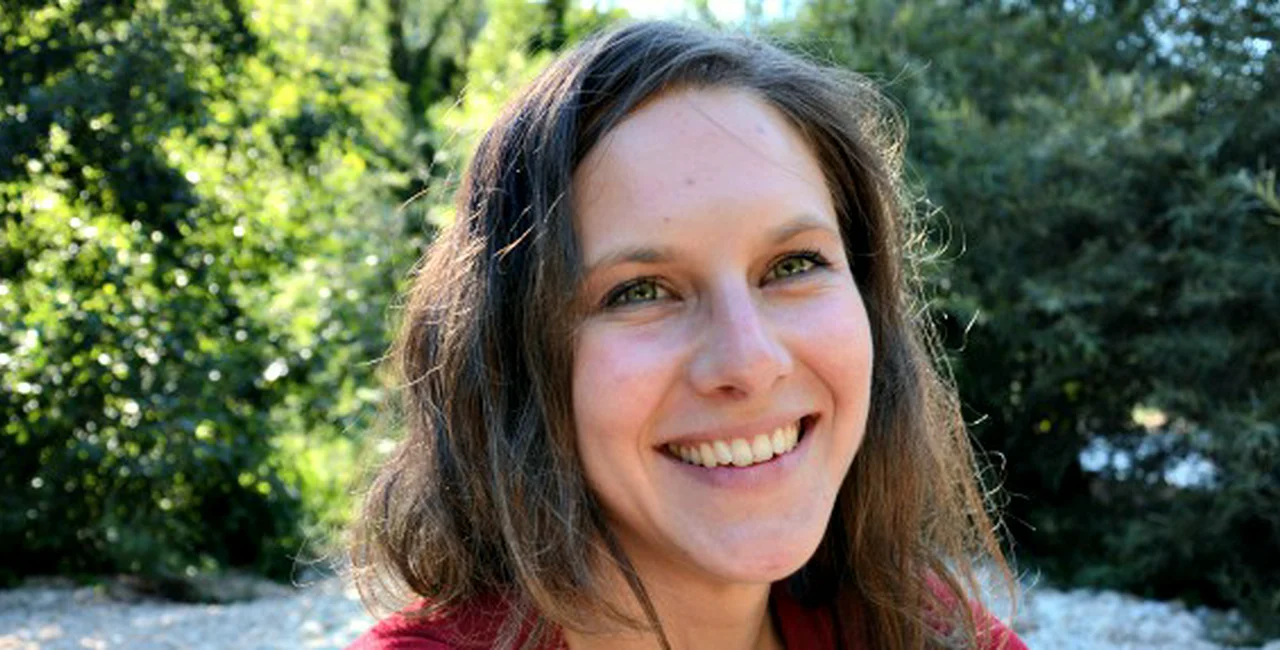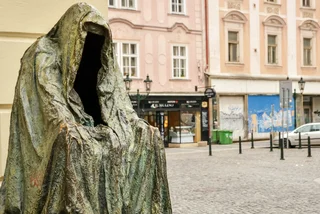For the second installment of our Czexpat series, we spoke with Markéta Slavková, a PhD candiate in social anthropology at Charles University, photographer, and activist. Currently based in Bosnia-Herzegovina, she has a strong personal connection to a historic Czech monument. Her photos have appeared on Al Jazeera Balkans, the July 2014 issue of the Bosnian weekly BH DANI, and in various exhibitions in Prague, including one at Rock Cafe. She has also contribued to the Czech publications Labyrint Revue and Vino&Styl.
Can you tell us about your childhood?
I grew up in South Bohemia in a town called Český Krumlov. The unusual thing was that I grew up in the castle, which happens to be the second biggest castle in the Czech Republic. My parents worked there, and we moved there when I was four, around 1988.
The first day we walked through the castle, the rooms were empty. They were just giant rooms with ceilings about four meters high, and I remember my parents telling me that was where we were going to live. Ever since then, I remember it as home.
So I actually wasn’t born there – everybody asks me that – but we happened to be there and I think it was a great bit of luck.
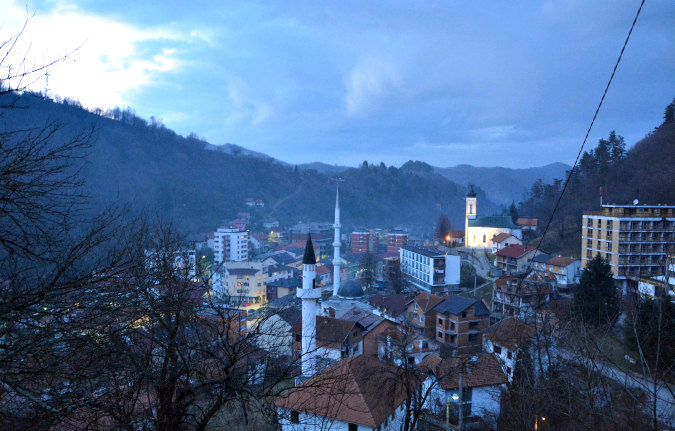
Srebrenica, January 2014. Home away from home (Photo: Marketa Slavkova)
How did your family come to live in the castle?
Well, my father is a castle keeper and my parents are both art historians, so they both worked there in the castle. With the job comes the flat, so it’s like a coincidence.
It used to be so different. The town was falling apart. In Větřní there was a paper factory that used to dump [waste] into the river, so the river was stinky and nobody actually liked it. But later, the medieval and historical center became intact and it was put on the UNESCO World Heritage list.
People always ask me if I lived like a princesses, but no, it was more normal. My parents like old furniture so we had some pieces from the early ’20s. It was really cold in the winter, because those rooms are huge and you can’t use fireplaces because of the risks, but it wasn’t that bad.
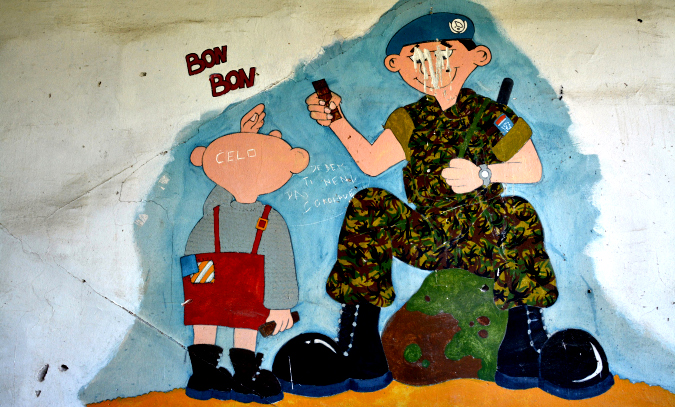
Dutch officer throws sweets to starving Bosnian child (Photo: Marketa Slavkova, 2014)
When did you decide to move abroad?
Well, I never really decided, but it just keeps happening. Being from Krumlov, I came into contact with people from different countries from a very early age and it started puzzling me. I think that really formed me.
But I also think it’s like a handicap that I have now. Growing up in Krumlov, I’m used to old buildings, pictures and places. When I lived in Melbourne from 2008-2009 as an exchange student doing my Master’s degree, I couldn’t get used to the place. The first week, I thought, ‘Man, it’s not ugly, but I couldn’t live here.’ All the new buildings and glass skyscrapers, it was very impersonal to me. I like the old feel of a place, crooked streets and everything being uneven.
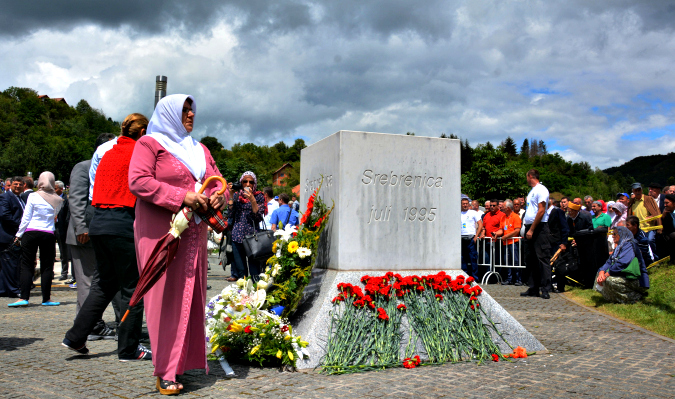
11/7/14 Commemoration of Srebrenica genocide in Potočari (Photo: Marketa Slavkova)
Was Melbourne the first place you lived abroad?
Yes, but before that I was into backpacking. My first time in Bosnia was in 2004 and it was a disaster! I got my first asthma attack there and ended up in the hospital and I didn’t know what was going on.
Then I went to Bosnia again, right before Melbourne, on a short, two-week excursion to study foreign nationalism with Charles University, which was really interesting. Then, when I got to Melbourne, the first professor I met was also Bosnian, Hariz Halilovich, and he invited me to a conference they were arranging.
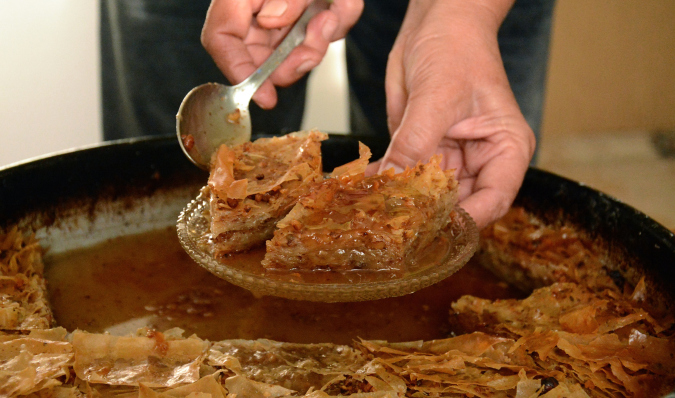
Serving Bosnian baklava for Bajram (Photo: Marketa Slavkova, 2013)
I later found out that he is a survivor of the genocide in Srebrenica and one of the current intellectuals who really want to talk about what happened and seek transitional justice. He’s a really interesting person. He studied to be a medical doctor, but when the war broke out he was persecuted and spent some time in a concentration camp. Eventually he got out and got asylum in Australia.
He and his colleagues are now part of an initiative called Summer University Srebrenica that happens every year in the first two weeks in July. It’s an academic program to link young researchers to academic experts, politicians, NGO’s, activists and other survivors. That’s where I realized what I should be doing.
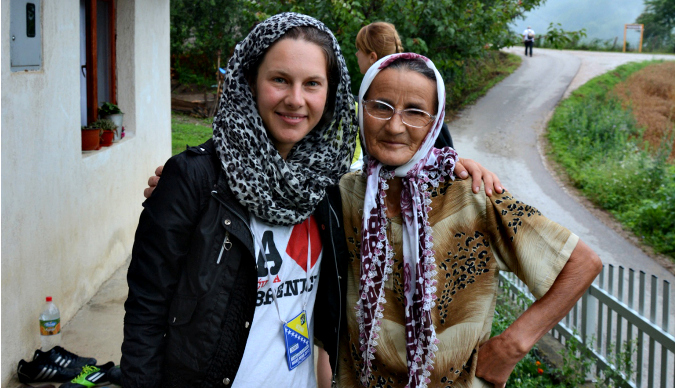
At the Peace March Nezuk-Potočari 2013 (Photo: Author’s archive)
And when did you move from Český Krumlov to Bosnia?
Well, that’s complicated, but basically in June 2013. My project is about food and genocide, if you can imagine that. It’s called Cooking and Dining in Times of War and Peace. It’s about the changing context and modes of food production and preparation in Srebrenica, in Eastern Bosnia.
Srebrenica is very small now. I think there are only several thousand living there permanently. There used to be almost 40,000 inhabitants before the war, and they can be allergic to foreign researchers. Many people feel exploited and that people are making money on their suffering. I know families living on about 100 euro a month, and the prices in Bosnia are actually quite similar [to here].
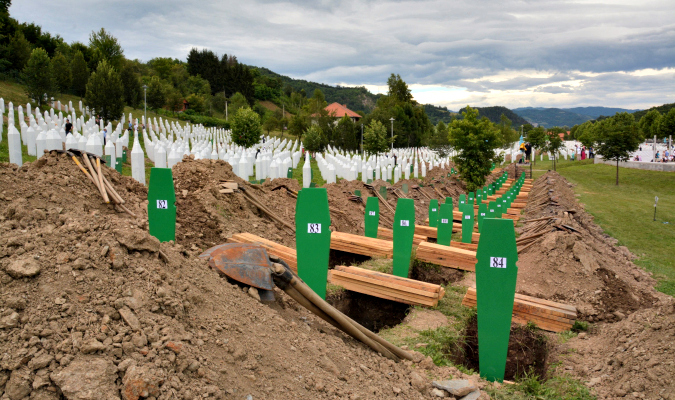
Memorial cemetery in Potočari, where victims of genocide are buried (Photo: Marketa Slavkova, 2014)
Is it obvious to them that you’re a foreigner?
It was very obvious in the beginning. The first day I was in Srebrenica alone, I was kind of hesitant to go out. I walked out on this hot day and everyone from the café started staring at me. But then I remembered what my Bosnian friend told me, “Just smile and wave, if you want.”
And what do they say when they find out you are Czech?
They like the fact that we had the Velvet Revolution and how we divided with Slovakia. I heard from a couple of different people that they almost cried when they heard it because it was just so casual, and they had to have such a nasty war.
The other thing I found out is more of a bad aspect. People from the Balkans know that Czech girls like sunbathing without their tops at the sea in Croatia, and they also know that we like a lot of beer, so I am sometimes told that Czech girls are a little easy. After the war, some people returned to religion so there is slightly more conservatism there.
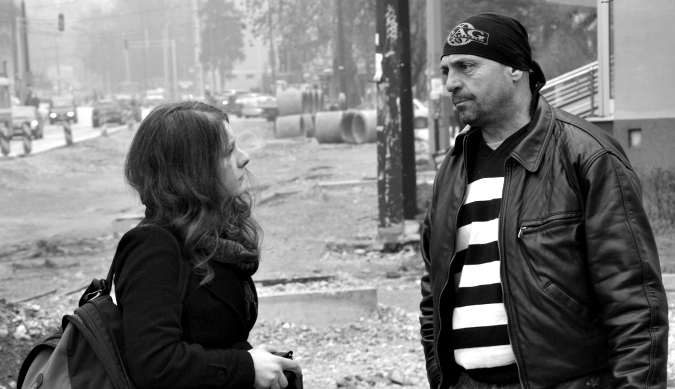
Interviewing parents from the “Konjević polje” education protest (Photo: Dirk Planert, 2014)
What are some things you miss about the Czech Republic?
I wouldn’t say this before, I was always complaining about it, but everything kind of works here in the Czech Republic: the public transportation, the infrastructure and definitely our health system. I tried to go to a pharmacy there when my friend had the flu, and the only thing the woman had was Vitamin C.
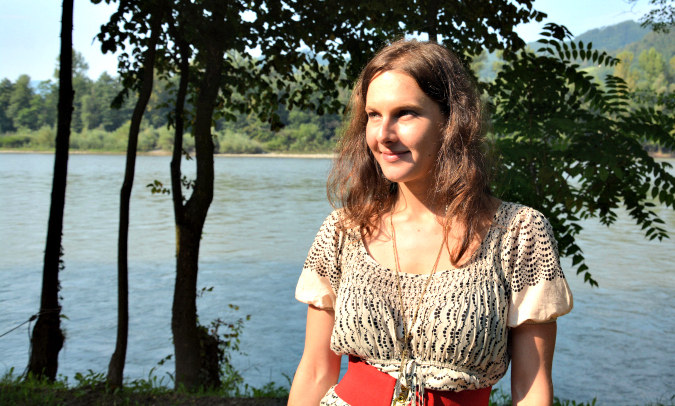
At Drina, the largest river in Eastern Bosnia (Photo: Muhamed Duraković, 2014)
I read a really good quote in a scholarly book about the Balkans, and it said, “Studying here is problematic, it’s like peeling an onion. The deeper you get, the more you cry.” It’s hard, but thankfully they also have this “dark humor” that lifts you up. It’s important both to cry and to laugh.
**
Do you have an interesting “Czexpat” story to share?











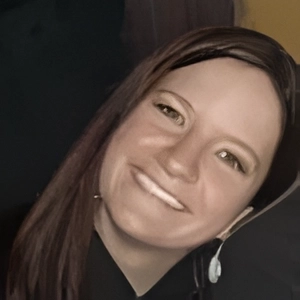
 Reading time: 6 minutes
Reading time: 6 minutes 